Listen to veteran artist Sudhir Patwardhan engage in a conversation with cultural theorist, poet and curator Ranjit Hoskote, as they discuss the artist's latest oeuvre — 'Mumbai Proverbs: The City Never Lets Go', a large-scale, seven-panel painting that depicts different facets of the metropolis
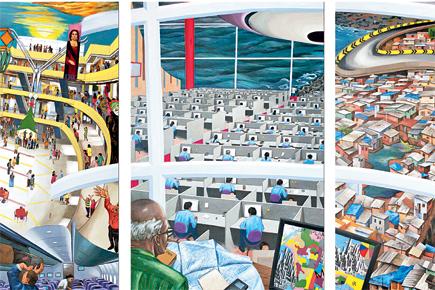
Cultural theorist Ranjit Hoskote describes Patwardhan's latest work as ''an encyclopaedic approach to the history of the city''
Mumbai with its chaos, many hues and moods have inspired artist and medical practitioner Sudhir Patwardhan's palette for over four decades. From street scenes to panoramic views of the city and its intimate moments, his brush has deftly etched the nuances of the metropolis. His latest artwork, titled 'Mumbai Proverbs: The City Never Lets Go', is a large 7.5x28 feet acrylic on canvas artwork in seven panels and marks the culmination of his engagement with the city.
ADVERTISEMENT
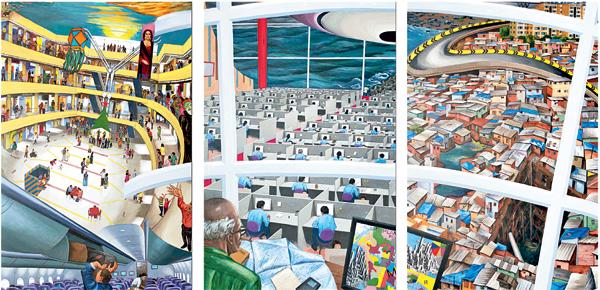
Cultural theorist Ranjit Hoskote describes Patwardhan's latest work as "an encyclopaedic approach to the history of the city"
While Mumbai Proverbs has been installed in a corporate office and won't be on public display, you can catch a glimpse of it at the Chhatrapati Shivaji Maharaj Vastu Sangrahalaya (CSMVS) on November 26, when the artist will be in conversation with cultural theorist Ranjit Hoskote, who has written extensively on his work. The event has been organised by the Mohile Parikh Center in collaboration with the CSMVS.
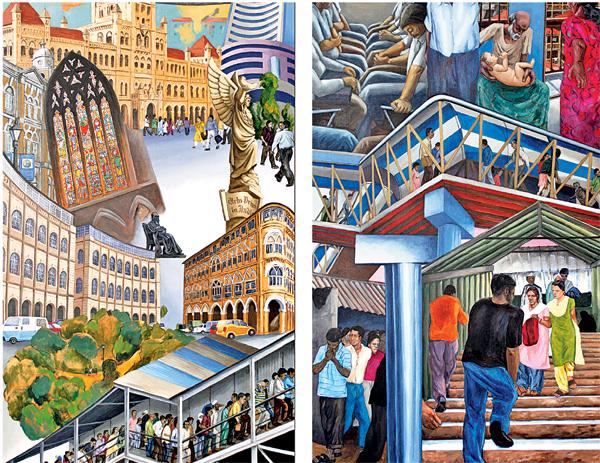
Panels from Mumbai Proverbs offering glimpses of the city
Change in the city
Mumbai Proverbs showcases Patwardhan's changing relationship with the ever-transforming city. While his earlier works employed three strategies to paint the city: the street-level view of a participant; the sweeping view of an observer and the guarded view of a city fragment viewed while looking out of a window; this work brings into play all these strategies. The artwork includes panoramas as well as close-ups, and depicts interiors of homes, factories and offices merged with views from the streets and aerial images, thus bringing together elements near and far, private and public.
The seven-panel structure is reminiscent of a Japanese screen. Patwardhan has used Binodbehari Mukherjee's Hindi Bhavan mural at Santiniketan as a point of reference as well as Diego Rivera's Detroit Industry Mural and Fernand Léger's The City. Viewed from left to right, the panels narrate the tale of the city, from its colonial beginnings to the Information Technology age.
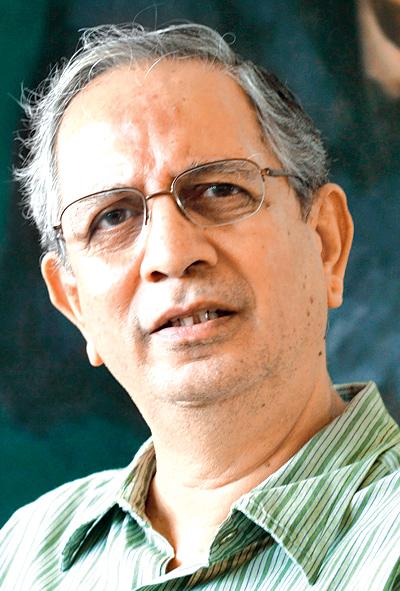
Sudhir Patwardhan
Patwardhan elaborates on these works, "Mumbai has been my favourite subject for decades, so when I was asked to do a painting on the city on such a large scale, I was very excited. Multiple fragments of experience go into our understanding of the city. What connects these fragments is our sense of belonging and sharing the space. To translate these into visual structures was a challenge."
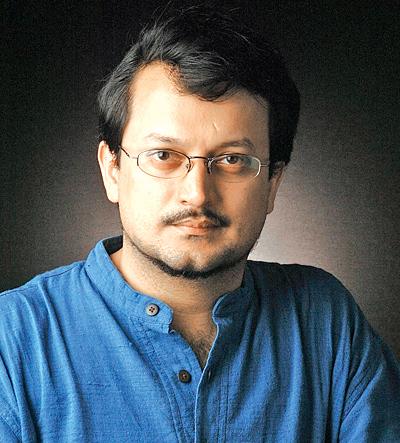
Ranjit Hoskote
The incidents that inspired the painting were more historic than personal: "The colonial influence, the history of textile mills, the building of flyovers, skywalks, metro lines, high-rise buildings; all this, even as slums seem to grow..."
Hoskote on Patwardhan
At the event, Ranjit Hoskote, who has known Patwardhan for over 25 years, as a friend, artist and a colleague, will offer insights into his fascination with the metropolis, the phenomenon of settlement, neighbourhood, social relationships, labour, as well as psychological and cultural mechanisms of modernity. Over the years, Hoskote has penned essays on Patwardhan's works, as well as two books on his art.
Analysing Patwardhan's work over the years, Hoskote shares: "The key shifts in his art have mirrored the social and political shifts that India has undergone in the last few decades as well as his own ideological shifts in stance. His paintings of the 1970s and '80s reflect his belief in the redemptive possibilities of socialist politics. Through the 1990s and early 2000s, the social group appears in his paintings as a diffuse crowd in anxiety or panic, in moments of rioting or flight."
Hoskote observes that while Patwardhan's paintings of the 1970s and 1980s assume an intimate view of homes, buildings and communities that inhabit them, his works of the 1990s and early 2000s take a distanced view of the glass-steel-concrete architecture that seems more alienating than comforting.
Summing up the artist's vision of Mumbai, Hoskote says, "It is deeply familiar and yet very strange; textured with personal memory yet capable of alienating violence. He has known, viewed and represented it through a specific experience informed by the history of the Left-wing cultural politics of the city in the 1960s and 1970s, the memory of the struggles of labour as well as the efforts of activists to bridge the gap between the middle and working classes."
On: November 26, 6.30 pm
At: Chhatrapati Shivaji Maharaj Vastu Sangrahalaya, Fort.
Call: 22844484
 Subscribe today by clicking the link and stay updated with the latest news!" Click here!
Subscribe today by clicking the link and stay updated with the latest news!" Click here!






